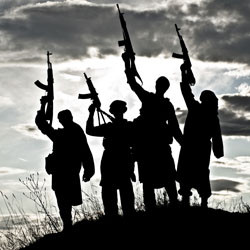Patterns of transformation in violent conflict
Phases of violent conflict can change and re-shape forms of violence and violent actors over the course of time. This is mostly the case during the decline phases. At such times, insurgent movements are weakened, isolated and fragmented. The EU-funded TRANSFORMATIONS (Transformations of violence during the decline of insurgencies) project aimed to pinpoint typical patterns of transformation and examine the mechanisms that propel these processes. The particular areas of focus were spread of indiscriminate violence and how political violence intertwines with other forms of violence, as well as the development of hybrid violent actors. Different types of data were used for the comparative analysis of three cases. These included the violent campaigns by Islamist movements in Algeria and Egypt since the early 1990s, and the violent insurgency of Sendero Luminoso in Peru. The comparison provides an examination of the combination of similarities in the structures and goals of insurgent movements. It also examines the differences in terms of culture and political settings. One of the project's main achievements was the development of an analytical approach. It built on social movement theory and studies on the operations of violence in civil wars. This offers the ability to trace and explain patterns of transformation in violence by concentrating on the dynamics of interactions of armed groups and their environments. The work has been presented at several international conferences. Findings will be useful in the field of violent insurgencies as they contribute to an innovative wave of current research and can pave the way to a largely unexplored field of study.
Keywords
Violent conflict, violence, insurgencies, transformations of violence, armed groups



